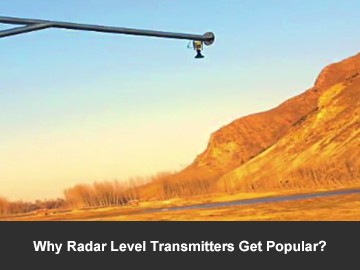Why Radar Level Transmitters Get Popular?
Evidence shows more and more people use radar level transmitters for their level measurement in recent years with a constant rise of demand. There is not without reason.
Actually, radar level transmitters work based on the time of flight (TOF) measuring principle or time domain reflectometry (TDR). They measure the distance from the reference point to the surface of the medium to be measured. When the product surface reflects the pulse, they receive the reflection and send a high-frequency signal from an antenna or along a probe. Then they calculates how long it took the pulse to return and translate that time delay into a level measurement. Based on the principle, the measuring range is large up to 70m or more, but the accuracy is quite high, up to ±3mm. And the medium can be ordinary liquid, such as water, oil, or corrosive chemicals, even solids. Radar level measurement is considered as a safe solution even under extreme process conditions (pressure, temperature), dust and vapours, liquids of high viscosity. They can also be used in hygienic applications for non-contact level measurement, like in food/beverage industry. Thus they are widely applied in transportation, environmental monitoring, energy industry and etc.
Besides, the price of radar level transmitters can be accepted by most of people as it is not too expensive but suitable for various applications. And the maintenance and cleaning cost is low, the smooth probe is easy to clean and if what you choose is a non-contact version, you do not bother to clean. The aspect to be noted when choosing a radar level transmitter with a bell, is to select the suitable size of the bell according to your specific application and installation method of your device.






